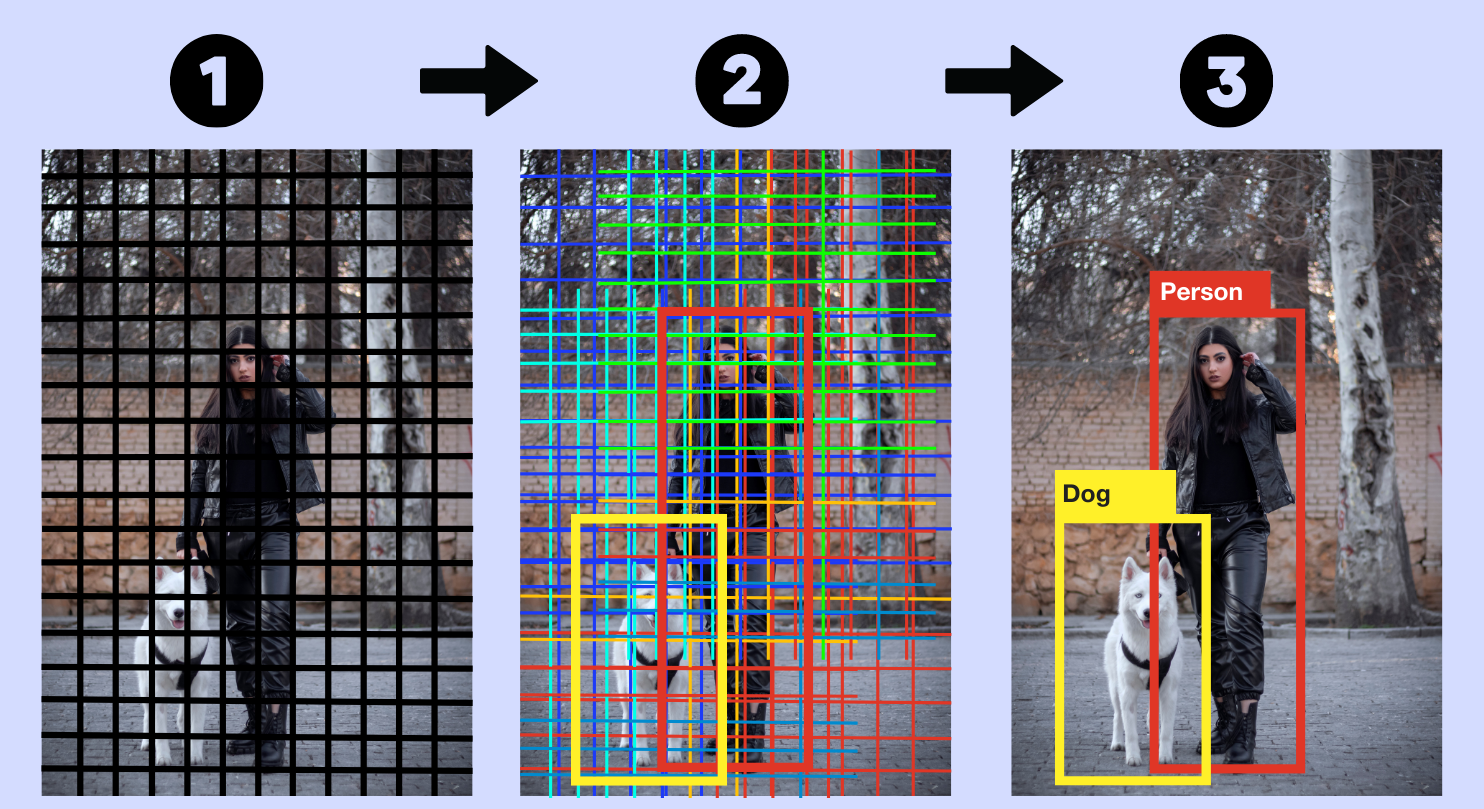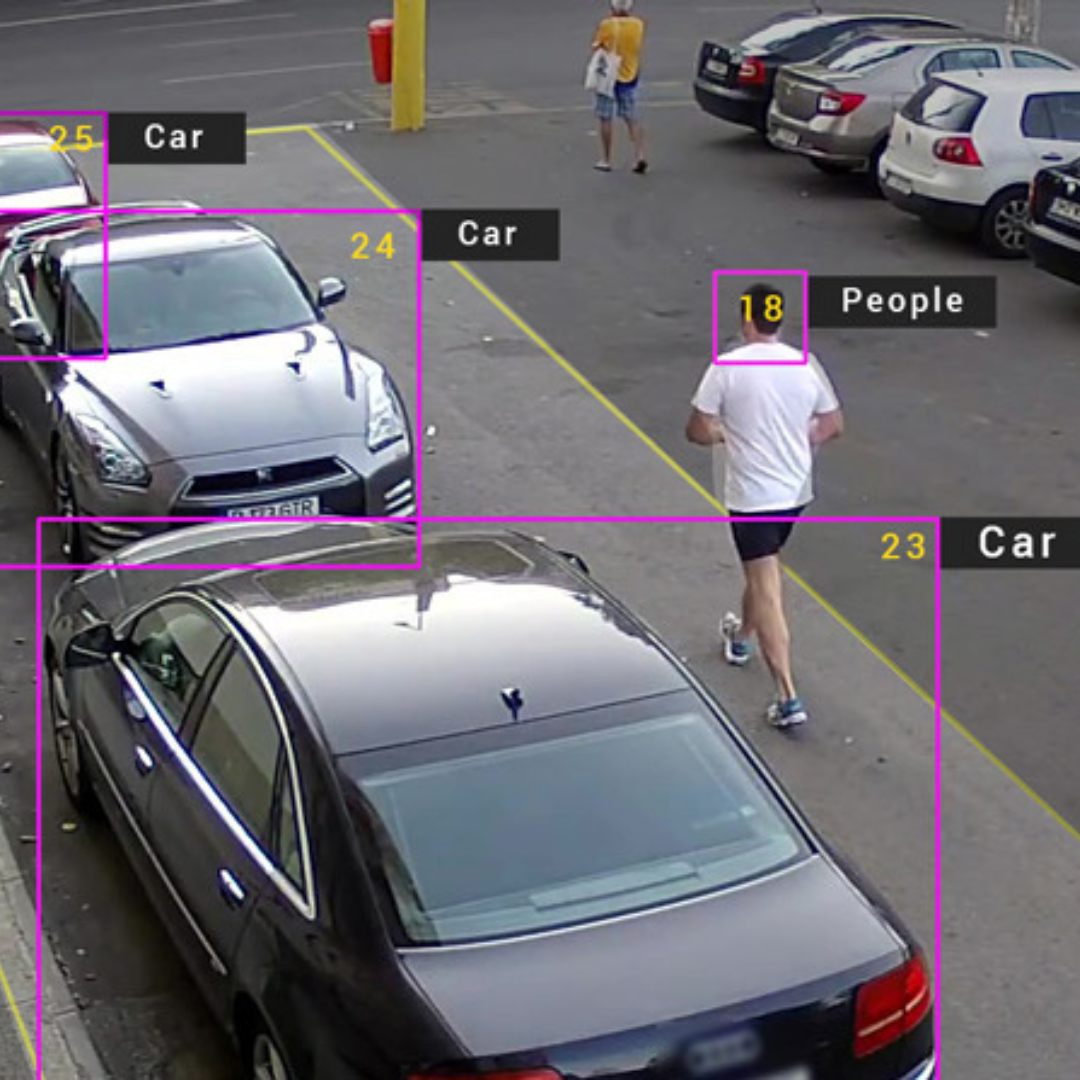You Only Look Once (YOLO): the best model for Ai-integrated video analytics?
Discover why You Only Look Once (YOLO) is considered the best model for Ai-integrated video analytics. Learn about its fast and efficient real-time processing, high accuracy, flexibility, and real-world applications. Compare YOLO with OpenAI CLIP and understand why YOLO's architecture makes it the superior choice for video analytics.
Video analytics is a rapidly growing field that combines computer vision and artificial intelligence (Ai) to extract insights from video footage. It has many practical applications, from security surveillance to retail analytics, and has the potential to revolutionize the way we interact with the world around us.
One of the most popular models used for video analytics is You Only Look Once (YOLO). Developed by Joseph Redmon et al. in 2016, YOLO is a real-time object detection system that can recognize and locate objects within an image or video stream. This blog will explore why YOLO is the best model for Ai-integrated video analytics.
What is YOLO?
YOLO is a deep learning model that uses a single neural network to detect objects in an image or video stream. It divides the image into a grid of cells and predicts bounding boxes, objectness scores, and class probabilities for each cell.
The bounding boxes define the location and size of the objects, while the objectness scores represent the confidence that an object is present in that cell. The class probabilities indicate the probability that the object belongs to a specific class, such as a car, person, or bicycle.

Why is YOLO the best model for Ai-integrated video analytics?
1. Fast and efficient
YOLO (You Only Look Once) is designed to be fast and efficient, making it ideal for real-time applications. It can detect objects in images or video streams at up to 45 frames per second, which is significantly faster than other object detection models. This speed and efficiency are critical for applications such as surveillance and security, where real-time monitoring is essential.
2. High accuracy
Despite its speed, YOLO is also highly accurate. It has a mean average precision (mAP) of up to 78.6%, comparable to other state-of-the-art object detection models. This high accuracy is achieved through a combination of techniques, including anchor boxes, multi-scale training, and feature extraction.

3. Flexible and customizable
YOLO is flexible and customizable, making it suitable for various applications. It can detect multiple objects simultaneously and be trained on custom datasets, allowing it to recognize specific objects or classes. This flexibility and customization make it ideal for industries such as retail, where it can be used to analyze customer behavior and optimize store layouts.
4. Continuous improvement
YOLO is constantly being improved and updated, with new versions and updates released regularly. This continuous improvement ensures that it remains at the cutting edge of object detection technology and can adapt to new challenges and applications.
Real-world applications of YOLO
YOLO (You Only Look Once) model has many practical applications in a wide range of industries. Here are just a few examples:
1. Security and surveillance: YOLO can detect and track people, vehicles, and other objects in real time, making it ideal for security and surveillance applications in different industries.

2. Retail analytics: YOLO can be used to analyze customer behavior and traffic flow in retail environments, providing insights that can be used to optimize store layouts and improve the customer experience.
3. Autonomous vehicles: YOLO can be used to detect and classify objects in real time, making it essential for autonomous vehicles such as self-driving cars.
4. Medical imaging: YOLO can be used to detect and diagnose medical conditions such as cancer, providing faster and more accurate diagnoses.
Open AI CLIP vs. YOLO (You Only Look Once)
One particular model is taking everyone by storm; you guessed it right! Open Ai CLIP, aka chat GPT in layman's terms, ‘OpenAi CLIP’ is what powers ChatGPT. While both models have their strengths, YOLO emerges as a better choice for video analytics due to its real-time processing capabilities, superior accuracy, and efficient architecture.
YOLO demonstrates superior accuracy in object detection. It has been trained on large datasets and fine-tuned through numerous iterations, resulting in highly accurate and reliable object detection performance. YOLO's architecture utilizes anchor boxes and feature extraction techniques, enabling it to detect objects with high precision and recall.
This accuracy is vital in applications such as autonomous driving, where correctly identifying objects on the road is critical for safety. OpenAi CLIP, while proficient in understanding the relationship between images and text, may not possess the same level of accuracy and fine-grained object detection capabilities as YOLO.
Additionally, YOLO's architecture is designed for efficiency and optimization. It achieves this through a single neural network that processes the entire image or video frame at once. This approach eliminates the need for time-consuming region proposals and subsequent classification steps, leading to faster processing speeds and efficient resource utilization.
OpenAi CLIP, on the other hand, employs a different architecture that focuses on language-image understanding rather than real-time object detection. As a result, its architecture may not be optimized for the specific demands of video analytics, making YOLO a better choice in this context.
It is worth noting that OpenAi CLIP excels in other areas, particularly in tasks involving language and image understanding. Its ability to associate images with corresponding text descriptions makes it a powerful model for tasks such as natural language queries on image databases. However, when it comes to video analytics specifically, YOLO's real-time processing, accuracy, and efficient architecture make it a better-suited choice.
Conclusion
You Only Look Once (YOLO) is a robust object detection algorithm that has revolutionized video analytics. Its speed, accuracy, and ease of use have made it the go-to algorithm for object detection in various applications. As the field of video analytics continues to grow, YOLO will likely remain at the forefront of object detection algorithms.
